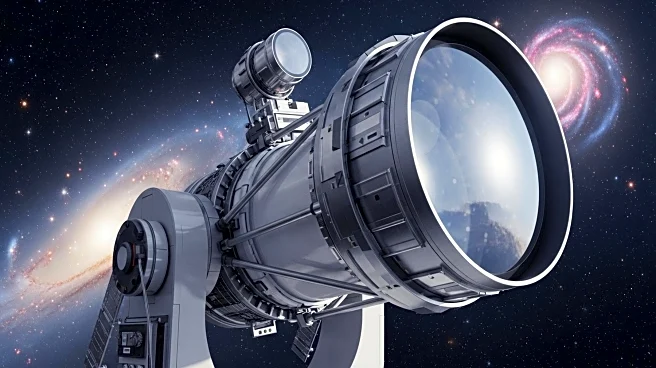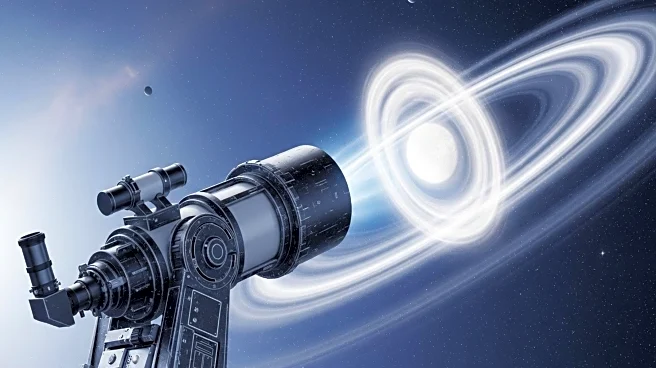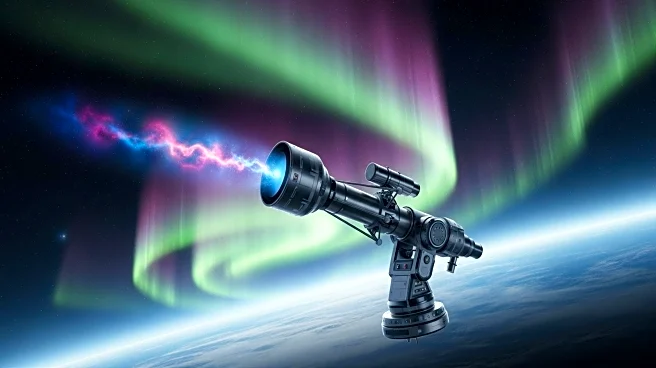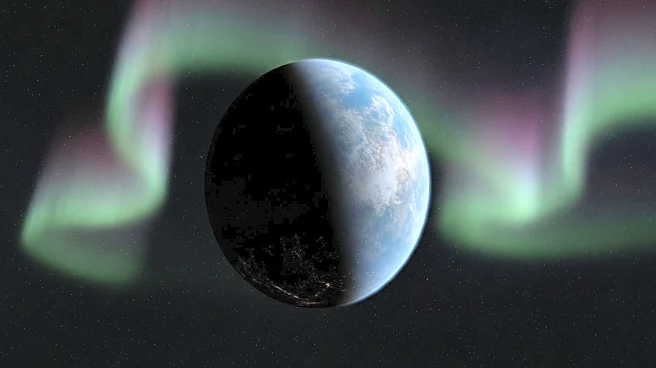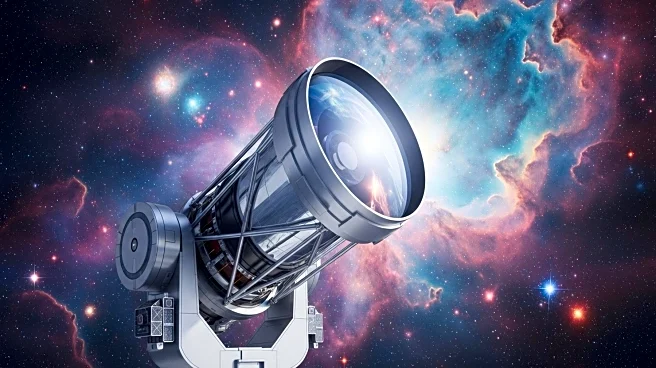What is the story about?
What's Happening?
Groundbreaking research from the University of St. Andrews has identified signs of a possible atmosphere surrounding TRAPPIST-1e, an Earth-sized exoplanet located 40 light years away. The planet orbits within the habitable zone of the TRAPPIST-1 star system, raising excitement about potential habitable conditions beyond our solar system. Researchers used the James Webb Space Telescope's NIRSpec instrument to analyze starlight passing through the planet's atmosphere, revealing potential chemical signatures. The initial results indicate several scenarios, including the possibility of a secondary atmosphere containing heavy gases like nitrogen. However, the data cannot yet rule out a bare rock with no atmosphere.
Why It's Important?
The discovery of an atmosphere on TRAPPIST-1e would be a significant milestone in the search for habitable conditions beyond Earth. An atmosphere is a vital signal when looking for evidence of metabolism, which is linked to life. The findings could influence future space research and technology, as they provide a framework for identifying habitable conditions in other star systems. The research highlights the challenges of detecting atmospheres around exoplanets, particularly when the host star contaminates observational data.
What's Next?
Researchers are obtaining further observations of TRAPPIST-1e to enable a deeper search for an atmosphere. With each additional transit, the atmospheric contents become clearer. The team plans to increase the number of observations from four to nearly twenty, enhancing the search for habitable conditions in other star systems. This ongoing research marks an exciting time for astronomy, as scientists have the tools to explore habitable conditions beyond our solar system.
AI Generated Content
Do you find this article useful?
